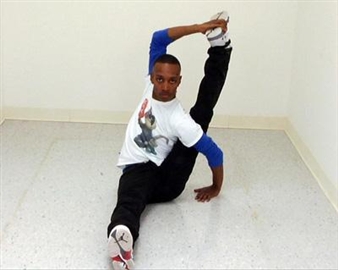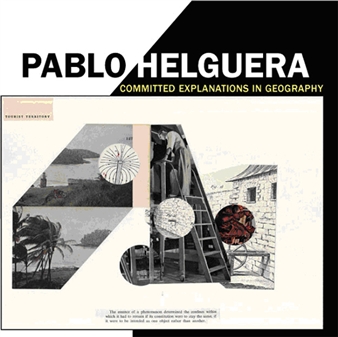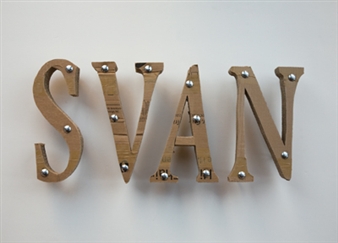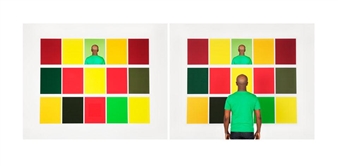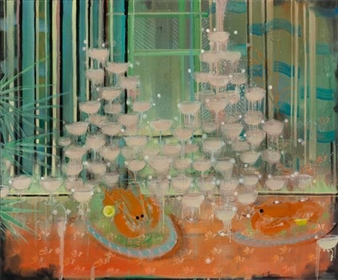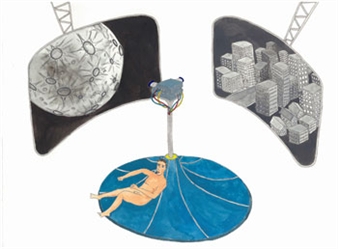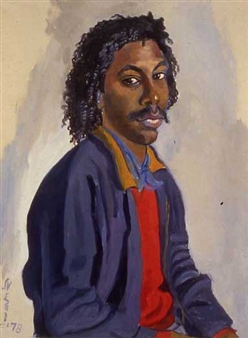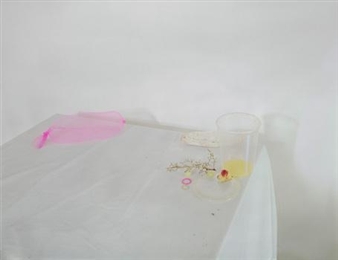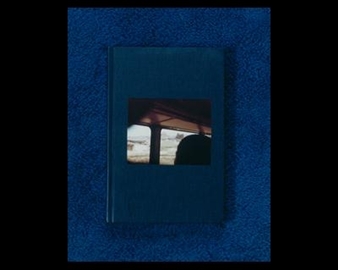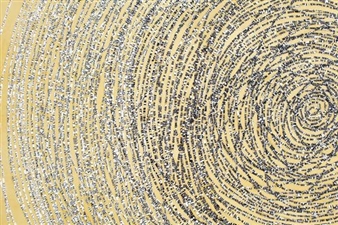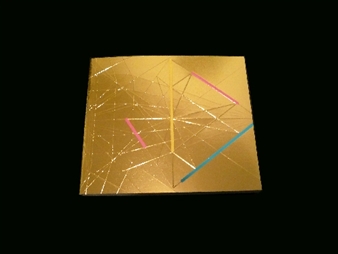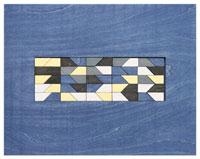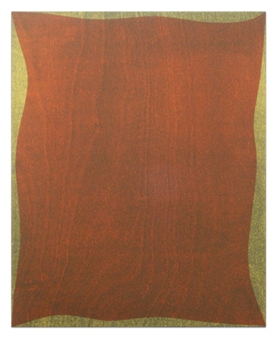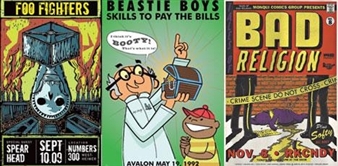This Will Have Been: Art, Love & Politics in the 1980s
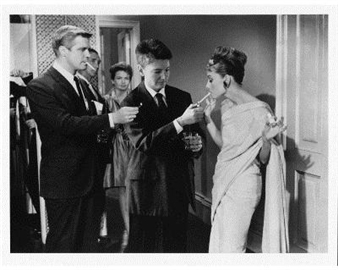
Institute of Contemporary Art (ICA) Boston, Georgia, Boston, 11/15/2012 - 03/03/2013
ABOUT
The 1980s—from the election of Ronald Reagan to the fall of the Berlin Wall—were a transformative decade for culture and society. This November, the Institute of Contemporary Art/Boston (ICA) presents a monumental new exhibition, This Will Have Been: Art, Love & Politics in the 1980s, the first major U.S. museum retrospective devoted to the art of this period. Featuring over 100 works by some 90 artists—including Jean-Michel Basquiat, Felix González-Torres, the Guerilla Girls, Jeff Koons, Robert Mapplethorpe, Richard Prince, Gerhard Richter, Doris Salcedo, Cindy Sherman, and Tseng Kwong Chi with Keith Haring—the exhibition offers an overview of the artistic production in the 1980s while situating our contemporary moment within the history of the recent past. Organized by the Museum of Contemporary Art Chicago, This Will Have Been: Art, Love & Politics in the 1980s is curated by Helen Molesworth, Barbara Lee Chief Curator at the ICA. The exhibition is on view from Nov. 15, 2012, through March 3, 2013.
“A decade marked by vast social and political change, the 1980s were a pivotal and tumultuous era for art and artists—one that is only now starting to feel distant enough to be viewed under a historical lens,” said Jill Medvedow, Ellen Matilda Poss Director of the ICA. “This Will Have Been is a landmark exhibition and achievement, and we are very proud to present it at the ICA.”
“This Will Have Been, which covers the period from 1979 to 1992, does not attempt to tell a properly chronological story of the decade nor define it along strict art historical terms,” said Molesworth. “Rather, the exhibition narrates the decade from the position of memory and hindsight, examining the role of art and artists during a decade shaped by powerful and converging forces: movements for social justice, mass-media saturation, and the HIV/AIDS crisis.”
Throughout the 1980s, a series of ruptures permanently changed the character of the U.S. art world. Art veered between radical and conservative, capricious and political, socially engaged and art-historically aware. Even as Reaganomics dramatically expanded art as a luxury commodity, postmodernism further challenged the very status of representation and shifted artists’ sense of their role in society. It was a time where people of color, women, and gay artists demanded to play an active role in the cultural conversation; photography challenged the primacy of painting and sculpture; the toll of the AIDS/HIV crisis politicized a broad cross-section of the art community; and the rise of globalism sounded the death knell of New York’s status as the sole “center” of the art world.
At the deepest level, This Will Have Been is shaped by two phenomena that frame the 1980s: feminism and the AIDS crisis. Within these larger outlines, the exhibition finds desire—rather than cynicism or irony—to be the real tenor of the decade. Desire is not reserved for only bodies and objects; one also finds the desire for a break with the past, for a principled and just government, and for the greater acceptance of difference. Through it all, the exhibition shows artists striving to articulate their wants, needs, and desires, in an increasingly material world.
The exhibition is further divided into four thematic sections:
The End Is Near looks at discourses about the end of painting, the end of the counter culture, and the end of history. Artists include: Dotty Attie, Robert Colescott, General Idea, Robert Gober, Jack Goldstein, Peter Halley, Mary Heilmann, Candy Jernigan, Martin Kippenberger, Louise Lawler, Sherrie Levine, Christian Marclay, Allan McCollum, Matt Mullican, Peter Nagy, Raymond Pettibon, Stephen Prina, Martin Puryear, Gerhard Richter, David Salle, Cindy Sherman, Doug + Mike Starn, Tony Tasset, James Welling, and Christopher Wool.
Democracy shows artists investigating the dynamics of the street and the mass media in works such as Gran Fury’s Kissing Doesn’t Kill. This section also notes the pervasive commitment to the political that shaped the art of the era, and the increasing prominence of artists of color. Artists include: Charlie Ahearn, Jean-Michel Basquiat, Gretchen Bender, Black Audio Film Collective, Jennifer Bolande, Gregg Bordowitz, Eugenio Dittborn, Gran Fury, Group Material, Hans Haacke, David Hammons, Jenny Holzer, Barbara Kruger, Louise Lawler, Donald Moffett, Lorraine O'Grady, Paper Tiger Television, Adrian Piper, Lari Pittman, Tim Rollins and K.O.S., Christy Rupp, Doris Salcedo, Juan Sánchez, Tseng Kwong Chi and Keith Haring, Carrie Mae Weems, Christopher Williams, and Krzysztof Wodiczko
Gender Trouble elaborates on the implications of the feminist movement. While posing new ideas about sexuality and the body, the work in this section expands gender roles or questions their construction. Artists include: Jimmy De Sana, Carroll Dunham, Jimmy Durham, Guerilla Girls, Mike Kelley, Paul McCarthy, Annette Messager, Albert Oehlen, Lorna Simpson, Rosemarie Trockel, and Jeff Wall.
Desire and Longing re-examines how artists use appropriation techniques by viewing them in light of notions of desire. Contextualized by the AIDS crisis and the emergence of queer visibility, these works ultimately link desire to longing – and to feelings of loss. Artists include: Judith Barry, Ashley Bickerton, Leigh Bowery, Deborah Bright, Sophie Calle, Marlene Dumas, Rotimi Fani-Kayode, Nan Goldin, Felix González-Torres, Peter Hujar, G. B. Jones, Isaac Julian, Mary Kelly, Silvia Kolbowski, Jeff Koons, Louise Lawler, Sherrie Levine, Robert Mapplethorpe, MICA-TV, Cady Noland, Richard Prince, Marlon Riggs, David Robbins, Laurie Simmons, Haim Steinbach, and David Wojnarowicz.
For More Information
The 1980s—from the election of Ronald Reagan to the fall of the Berlin Wall—were a transformative decade for culture and society. This November, the Institute of Contemporary Art/Boston (ICA) presents a monumental new exhibition, This Will Have Been: Art, Love & Politics in the 1980s, the first major U.S. museum retrospective devoted to the art of this period. Featuring over 100 works by some 90 artists—including Jean-Michel Basquiat, Felix González-Torres, the Guerilla Girls, Jeff Koons, Robert Mapplethorpe, Richard Prince, Gerhard Richter, Doris Salcedo, Cindy Sherman, and Tseng Kwong Chi with Keith Haring—the exhibition offers an overview of the artistic production in the 1980s while situating our contemporary moment within the history of the recent past. Organized by the Museum of Contemporary Art Chicago, This Will Have Been: Art, Love & Politics in the 1980s is curated by Helen Molesworth, Barbara Lee Chief Curator at the ICA. The exhibition is on view from Nov. 15, 2012, through March 3, 2013.
“A decade marked by vast social and political change, the 1980s were a pivotal and tumultuous era for art and artists—one that is only now starting to feel distant enough to be viewed under a historical lens,” said Jill Medvedow, Ellen Matilda Poss Director of the ICA. “This Will Have Been is a landmark exhibition and achievement, and we are very proud to present it at the ICA.”
“This Will Have Been, which covers the period from 1979 to 1992, does not attempt to tell a properly chronological story of the decade nor define it along strict art historical terms,” said Molesworth. “Rather, the exhibition narrates the decade from the position of memory and hindsight, examining the role of art and artists during a decade shaped by powerful and converging forces: movements for social justice, mass-media saturation, and the HIV/AIDS crisis.”
Throughout the 1980s, a series of ruptures permanently changed the character of the U.S. art world. Art veered between radical and conservative, capricious and political, socially engaged and art-historically aware. Even as Reaganomics dramatically expanded art as a luxury commodity, postmodernism further challenged the very status of representation and shifted artists’ sense of their role in society. It was a time where people of color, women, and gay artists demanded to play an active role in the cultural conversation; photography challenged the primacy of painting and sculpture; the toll of the AIDS/HIV crisis politicized a broad cross-section of the art community; and the rise of globalism sounded the death knell of New York’s status as the sole “center” of the art world.
At the deepest level, This Will Have Been is shaped by two phenomena that frame the 1980s: feminism and the AIDS crisis. Within these larger outlines, the exhibition finds desire—rather than cynicism or irony—to be the real tenor of the decade. Desire is not reserved for only bodies and objects; one also finds the desire for a break with the past, for a principled and just government, and for the greater acceptance of difference. Through it all, the exhibition shows artists striving to articulate their wants, needs, and desires, in an increasingly material world.
The exhibition is further divided into four thematic sections:
The End Is Near looks at discourses about the end of painting, the end of the counter culture, and the end of history. Artists include: Dotty Attie, Robert Colescott, General Idea, Robert Gober, Jack Goldstein, Peter Halley, Mary Heilmann, Candy Jernigan, Martin Kippenberger, Louise Lawler, Sherrie Levine, Christian Marclay, Allan McCollum, Matt Mullican, Peter Nagy, Raymond Pettibon, Stephen Prina, Martin Puryear, Gerhard Richter, David Salle, Cindy Sherman, Doug + Mike Starn, Tony Tasset, James Welling, and Christopher Wool.
Democracy shows artists investigating the dynamics of the street and the mass media in works such as Gran Fury’s Kissing Doesn’t Kill. This section also notes the pervasive commitment to the political that shaped the art of the era, and the increasing prominence of artists of color. Artists include: Charlie Ahearn, Jean-Michel Basquiat, Gretchen Bender, Black Audio Film Collective, Jennifer Bolande, Gregg Bordowitz, Eugenio Dittborn, Gran Fury, Group Material, Hans Haacke, David Hammons, Jenny Holzer, Barbara Kruger, Louise Lawler, Donald Moffett, Lorraine O'Grady, Paper Tiger Television, Adrian Piper, Lari Pittman, Tim Rollins and K.O.S., Christy Rupp, Doris Salcedo, Juan Sánchez, Tseng Kwong Chi and Keith Haring, Carrie Mae Weems, Christopher Williams, and Krzysztof Wodiczko
Gender Trouble elaborates on the implications of the feminist movement. While posing new ideas about sexuality and the body, the work in this section expands gender roles or questions their construction. Artists include: Jimmy De Sana, Carroll Dunham, Jimmy Durham, Guerilla Girls, Mike Kelley, Paul McCarthy, Annette Messager, Albert Oehlen, Lorna Simpson, Rosemarie Trockel, and Jeff Wall.
Desire and Longing re-examines how artists use appropriation techniques by viewing them in light of notions of desire. Contextualized by the AIDS crisis and the emergence of queer visibility, these works ultimately link desire to longing – and to feelings of loss. Artists include: Judith Barry, Ashley Bickerton, Leigh Bowery, Deborah Bright, Sophie Calle, Marlene Dumas, Rotimi Fani-Kayode, Nan Goldin, Felix González-Torres, Peter Hujar, G. B. Jones, Isaac Julian, Mary Kelly, Silvia Kolbowski, Jeff Koons, Louise Lawler, Sherrie Levine, Robert Mapplethorpe, MICA-TV, Cady Noland, Richard Prince, Marlon Riggs, David Robbins, Laurie Simmons, Haim Steinbach, and David Wojnarowicz.
For More Information